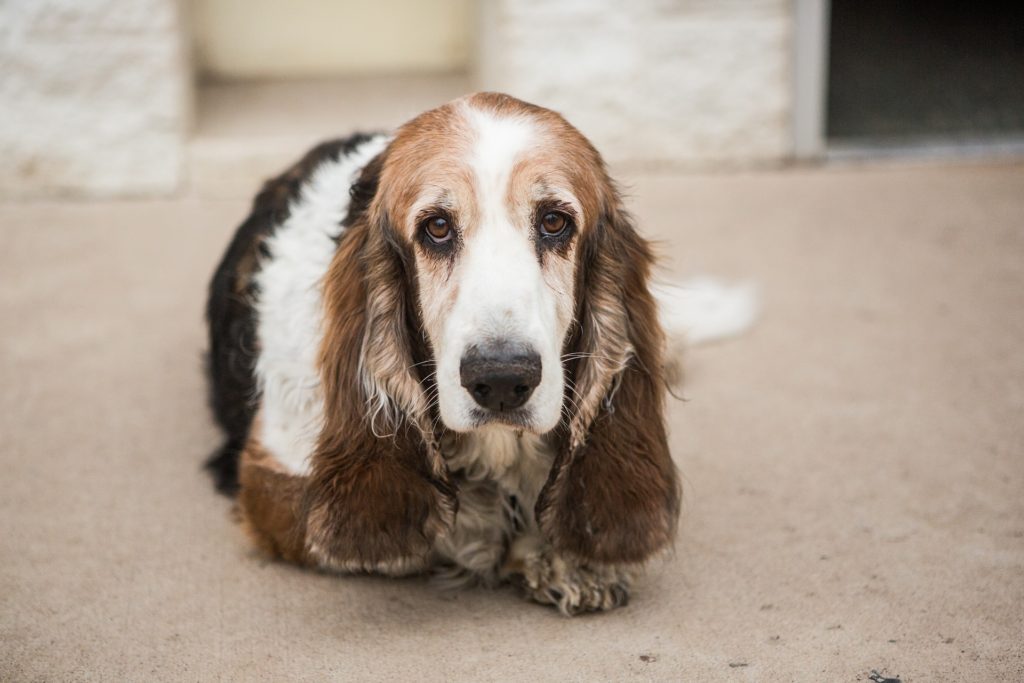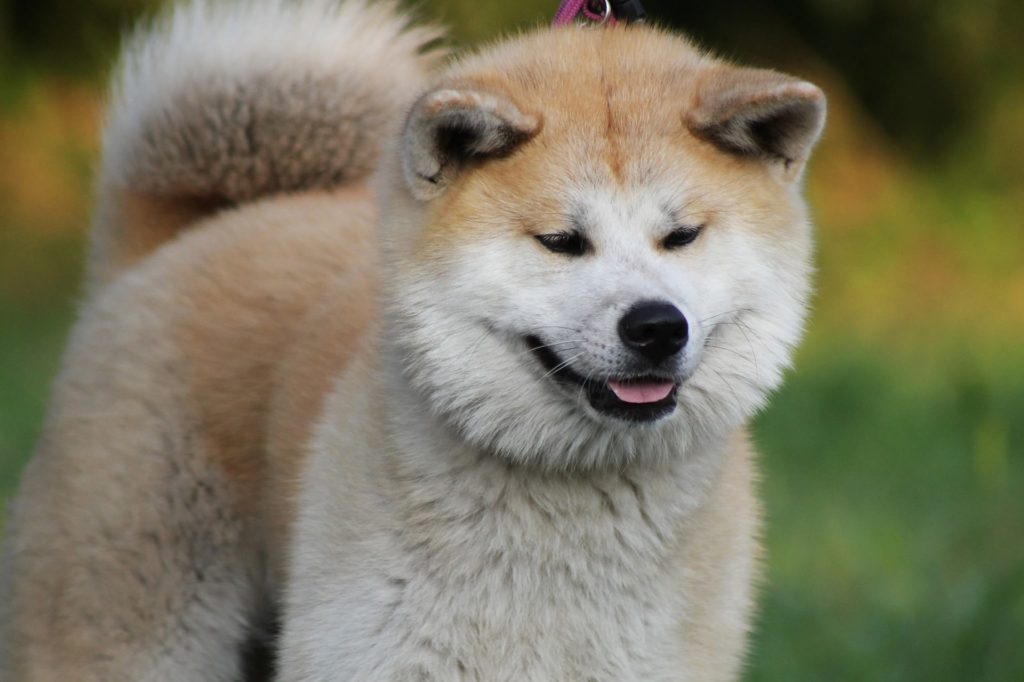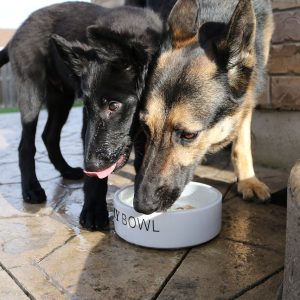Everyone knows the eyes are the windows to the soul. And if you’ve noticed your dog pawing at their face or squinting, that could signal a problem. Unfortunately, dog eye infections crop up without warning. Left untreated, an infection can grow into a severe problem. Not to worry, though. This guide will give you all the information you need regarding dog eye infections and how to manage them.
Dog Eyes
Dog eyes share the same structures as our own. However, dogs have a few bonuses we lack:
- Nictitating membrane: This is also known as the third eyelid. It’s a thin, white membrane that sweeps across the eye when your dog blinks. It serves as an additional protective layer for the eye.
- Tapetum lucidum: Ever catch that “eye shine” when your dog’s outside at night? That’s the tapetum lucidum at work. It’s a reflective lining positioned behind the retina that provides enhanced night vision.
Dog eye infections crop up when things go wrong with one of the structures of the eye.
Dog Eye Infections and Breed Predisposition
Unfortunately, there are a few breeds that have a higher tendency towards eye infections than others. The risk goes up due to the formations of their skulls, the way skin lays on their face, and genetic predisposition for specific conditions.
The Brachycephalic Skull

We love the bulgy eyes of flat-faced breeds. It’s one of the most endearing traits of those cuties. But those flattened skulls mean the eye sockets are shallow. As a result, the eye sits higher, making it more prominent. As a result, the tear ducts face drainage problems. When eyes don’t stay shiny and moist, you see an increase in dog eye infections. So keep an eye on your Boxers, Bulldogs, Pekingese, and Pugs.
The Floppy Face

You love squishing all of those loose folds of skin, right? Nothing beats cuddling up with a giant jowly dog. (Provided you can cope with the drool) These dogs face the opposite problem of brachycephalic breeds. Instead of a prominent eye, they have skulls that allow the eye to roll down in the socket. This is referred to as ectropion. It can lead to a condition called cherry eye, where that third eyelid becomes trapped and protrudes from the corner of the eye. Untreated, dog eye infections result. Surgical correction IS possible, so there’s no need to despair. The most at-risk breeds include:
- Basset Hounds
- Beagles
- Bloodhounds
- Bulldogs (yeah, double-whammy)
- Cocker Spaniels
- Saint Bernards
Bad Genes

Pure-bred dogs don’t always get the best from their genetic code. Some breeds have codes that cause their eyelids to roll inward. It scrapes against their eye, scratching the cornea and inviting dog eye infections to invade. This condition is known as entropion. (Sounds similar – just remember in versus out) Again, there’s a surgical repair to treat the condition. The most common breeds you see this genetic predisposition in are:
- Akitas
- Bloodhounds (their eyelids can go in or out)
- Bulldogs (let’s face it – bulldog eyes aren’t healthy)
- Chows
- Great Danes
- Mastiffs
- Pitbulls
- Rottweilers
- Spaniels
- Vizslas
- Weimaraners
Dog Eye Infections
Your dog has many structures in place to protect the cornea (the transparent covering of the eye). Dog eye infections occur when SOMETHING breaks the healthy surface of your dog’s cornea. The usual culprits are your dog’s nails, grass, twigs, or another foreign body (which includes hair). As soon as the slightest scratch mars the surface, bacteria move in.
Bacteria cause the bulk of dog eye infections. They enter the surface of the cornea and make themselves at home. You ALWAYS need to seek a veterinarian’s care for dog eye infections. The eye is delicate, and conditions can progress quickly. You don’t want your dog to lose their sight if you can help it.
Signs of Dog Eye Infections
There are different presentations for dog eye infections. If you didn’t notice the eye injury in the first place, you might not know there’s trouble brewing. Eventually, though, you’ll see some of these signs. And, often, you’ll see more than one at the same time:
- Redness in and around the eye
- Discharge:
- Clear discharge tends to mean a viral infection or allergies
- Cloudy or yellowy discharge reflects dry eye
- Yellowish-green discharge declares a bacterial infection
- Squinting
- Rubbing at the eye with their paw or rubbing their head on the floor
- Swelling of the eyelids
If you see these symptoms, call your vet ASAP. And discourage your dog from rubbing the affected eye. The last thing you want is for them to cause further damage. Remember, dog eye infections start from a scratch. You don’t want them to create more.
Types of Dog Eye Infections
It’s impossible to look at your dog and know what’s going on with their eye. Dog eye infections look very similar from the outside. This is why a vet visit is in the cards. That exam will determine what’s going on. There are a lot of possibilities, and an infection can progress to another condition.
- Conjunctivitis: That’s right, good old “pink eye.” This is inflammation of your dog’s eye. There’s infectious and non-infectious conjunctivitis, and they look the same. They also have a variety of causes, from trauma to dry eye to tumors.
- Dry eye: Tear ducts don’t always produce the proper lubrication for the eye. When the eye isn’t protected, you get dog eye infections. (Worse is also possible – my cat had to have sections of both corneas removed due to his dry eyes)
- Epiphora: Epiphora is a fancy term for excessive tearing. This is the opposite of dry eye, and it causes infection of the skin around the eyes. Eye wipes often help keep this residue under control.
- Glaucoma: Increased pressure within the eye causes glaucoma. It’s PAINFUL and requires surgical intervention.
- Uveitis: Dog eye infections can target the INSIDE of your dog’s eye. Uveitis occurs when an infection gets inside the cornea.
The Vet Visit
You noticed your dog’s eyes acting up, and you made the vet appointment. The list of dog eye infections is long. So how does a vet figure out what’s going on? They run through a series of tests that rule out each dog eye infection possibility.
- Every dog gets a thorough physical exam. That includes a full check of the eye with an ophthalmoscope.
- A Schirmer Tear Test checks that your dog produces adequate tears.
- Fluorescein dye is applied across your dog’s eyes to check for scratches or ulcers on the surface of the cornea.
- Numbing drops get applied to the eyes. Then, a tonometer tests your dog’s intraocular pressure (listed as their IOP).
- Your dog’s eyes will get dilated so the vet can examine the back of the eye. This includes the optic nerve, retina, and tapetum lucidum.
Treating Dog Eye Infections
You now have a diagnosis of your dog’s eye infection. Now it’s time to medicate that nasty infection and get it out of your dog’s system. Odds are you’ll receive a drop or ointment (or both) to administer several times a day. You’ll also get an E-collar to prevent your dog from rubbing the affected eye.
USE THE E-COLLAR!
The worst thing that can happen is further trauma to an eye. Bacteria LOVE scratches. Fresh wounds invite further dog eye infections, and you don’t want that to happen. So even if your dog whines or gives you the sad puppy face, keep the E-collar on.
Administering Drops and Ointments
Treating your dog’s eye infection is easy. Once you get the hang of things, you’ll be a pro. Just follow this process each time:
- Ointments go LAST. (They block absorption of drops)
- Separate medications by at least 5 minutes to allow proper absorption into the eye.
- Gently tip your dog’s head back, placing one hand on the lower lid.
- With the hand holding the tube/bottle, draw the upper lid back to expose the eye.
- Drop the instructed number of drops into the eye. Don’t touch the tip of the bottle to the eye!
- Allow your dog to blink between drops. (Or gently close the lids yourself)
- If using an ointment, apply the strip across the eye. Don’t touch the tip of the tube to the eye!
- Give your dog a treat and plenty of praise.
Eye of the Beholder
Eyes are important. You don’t want dog eye infections to lead to a loss of vision. If your dog likes to keep their head in the dirt, check their eyes regularly. Any time you see something strange, make a vet appointment. Eye conditions deteriorate quickly, and the sooner you react, the better.
With proper attention, you’ll keep those doggy eyes shining bright for a long time to come.













No comment yet, add your voice below!